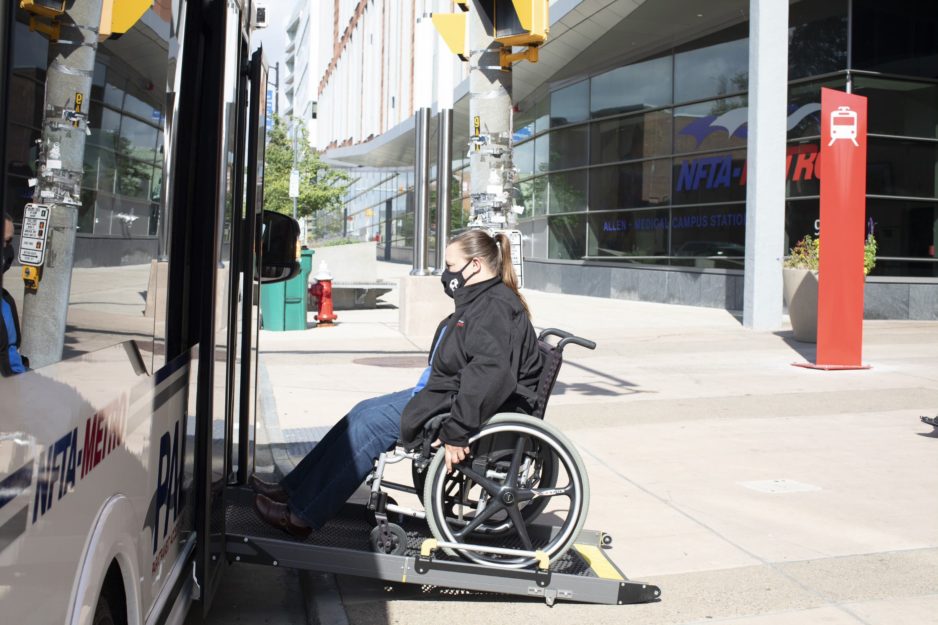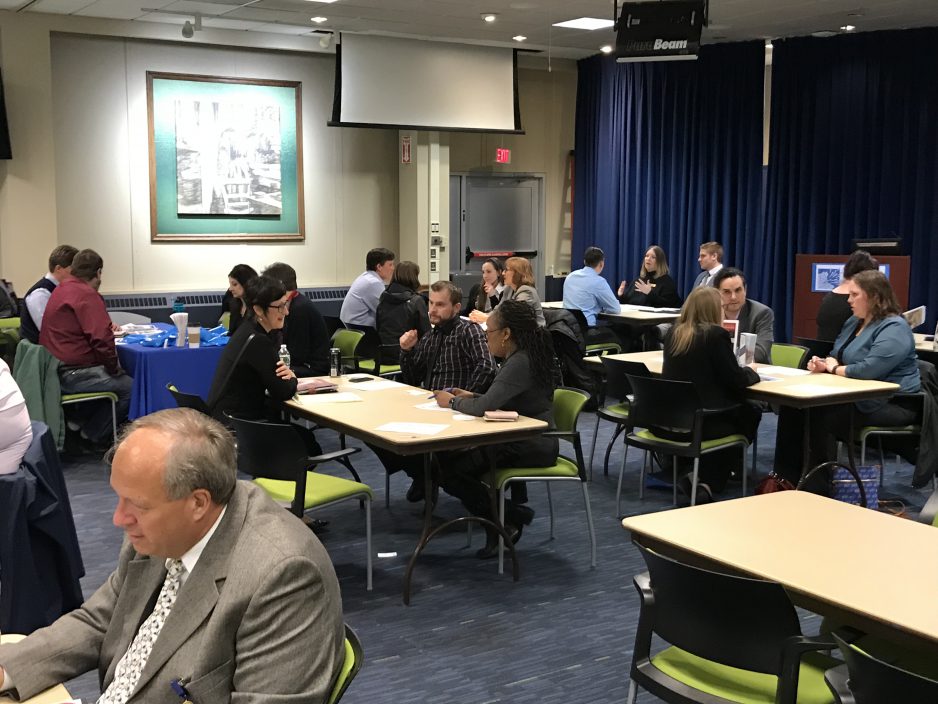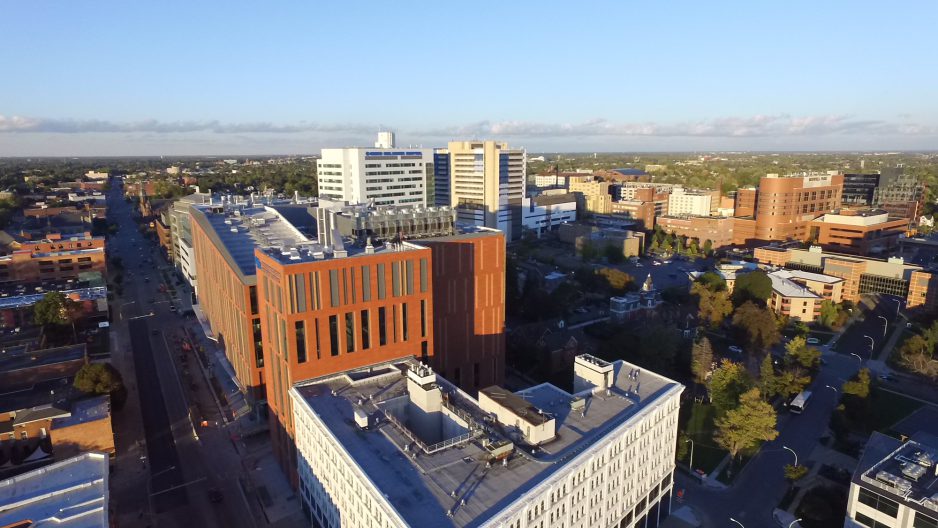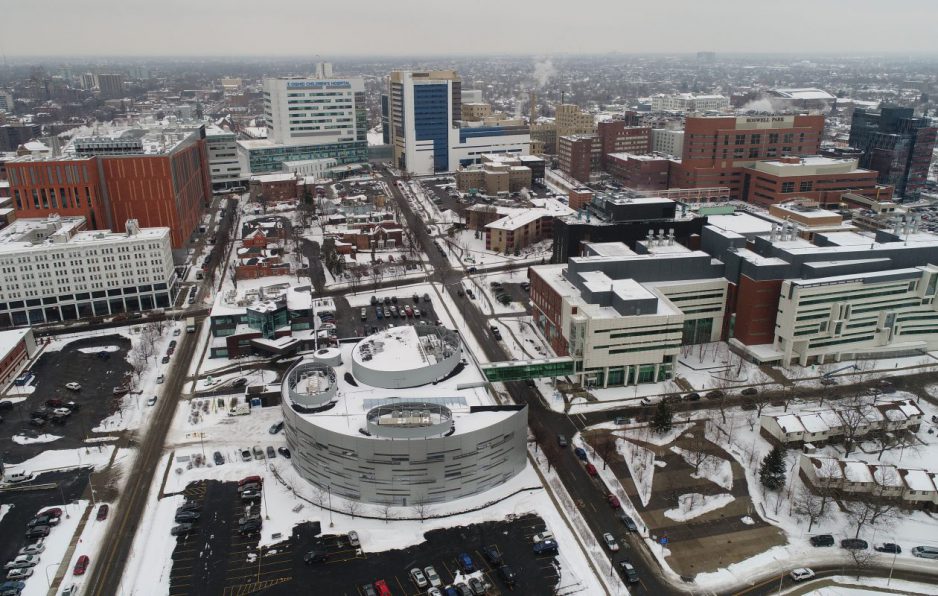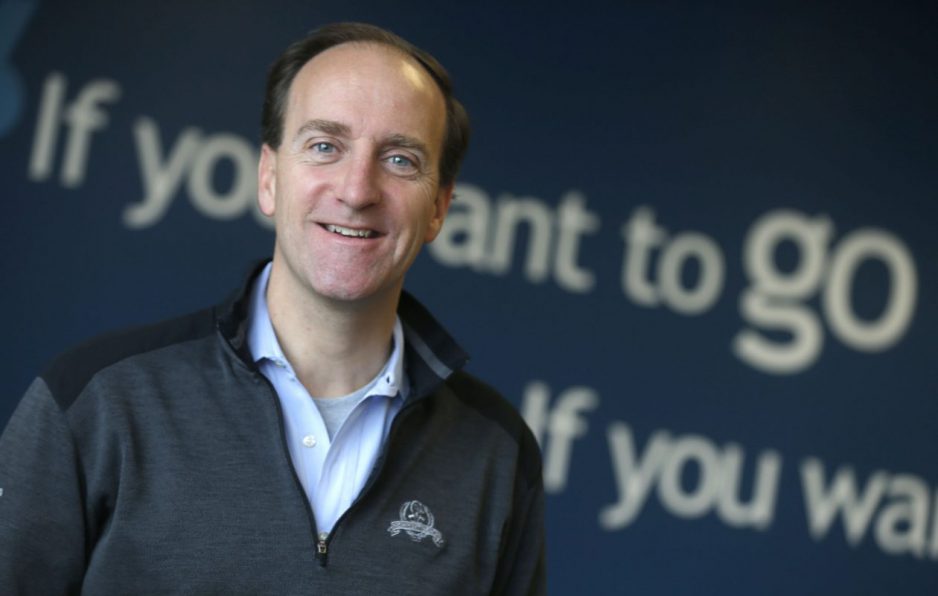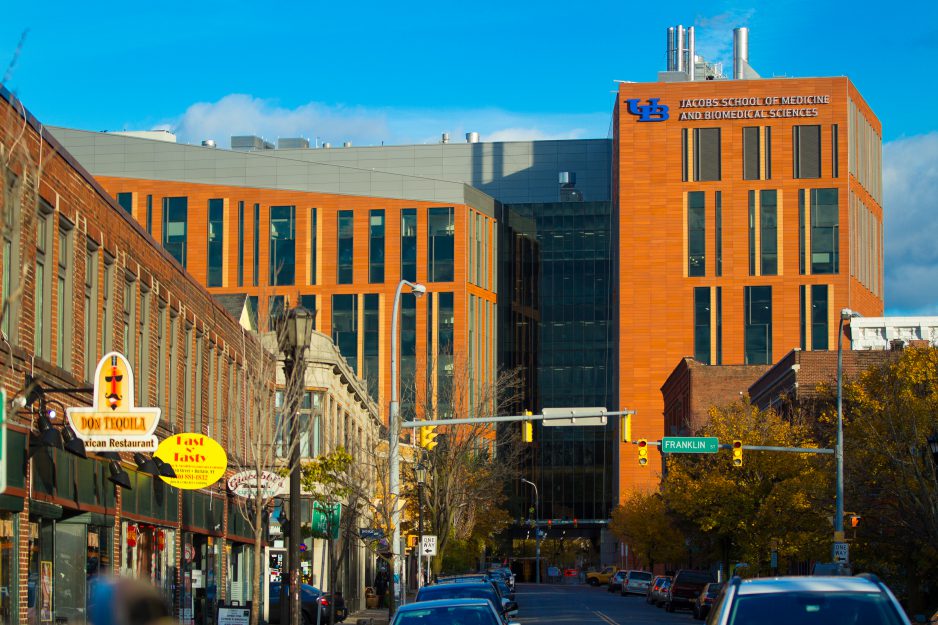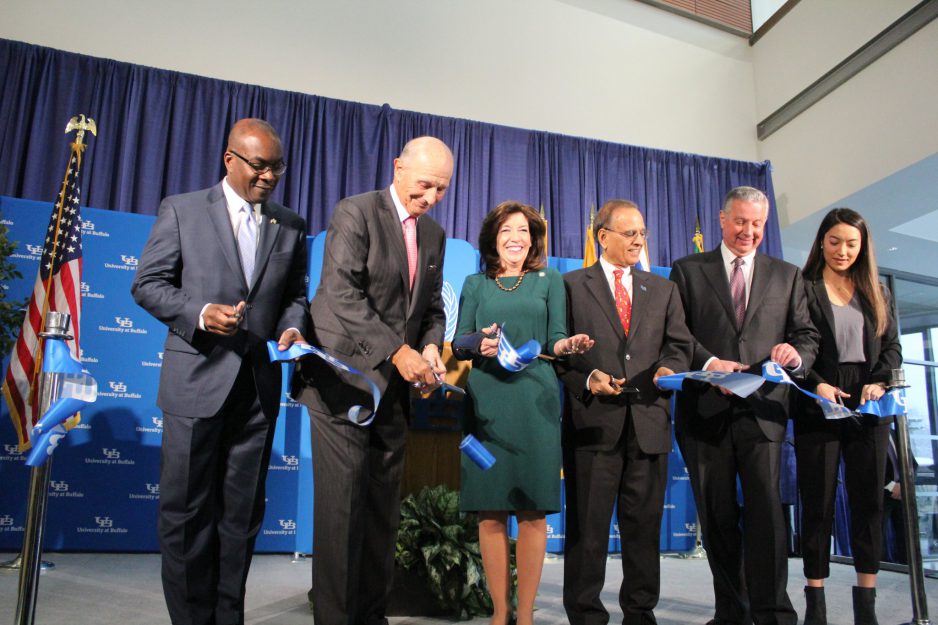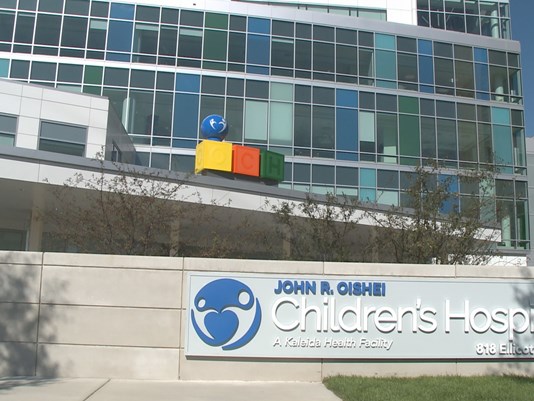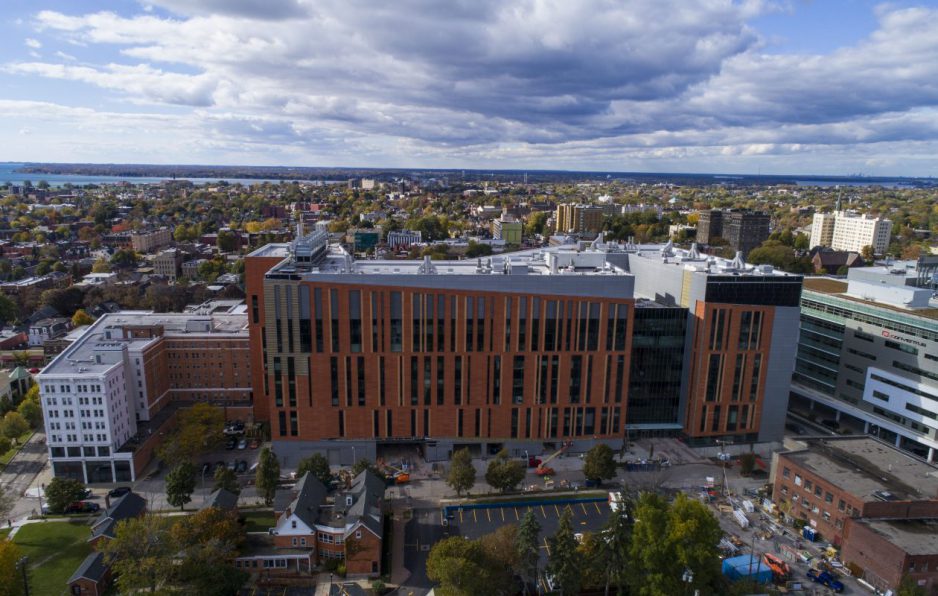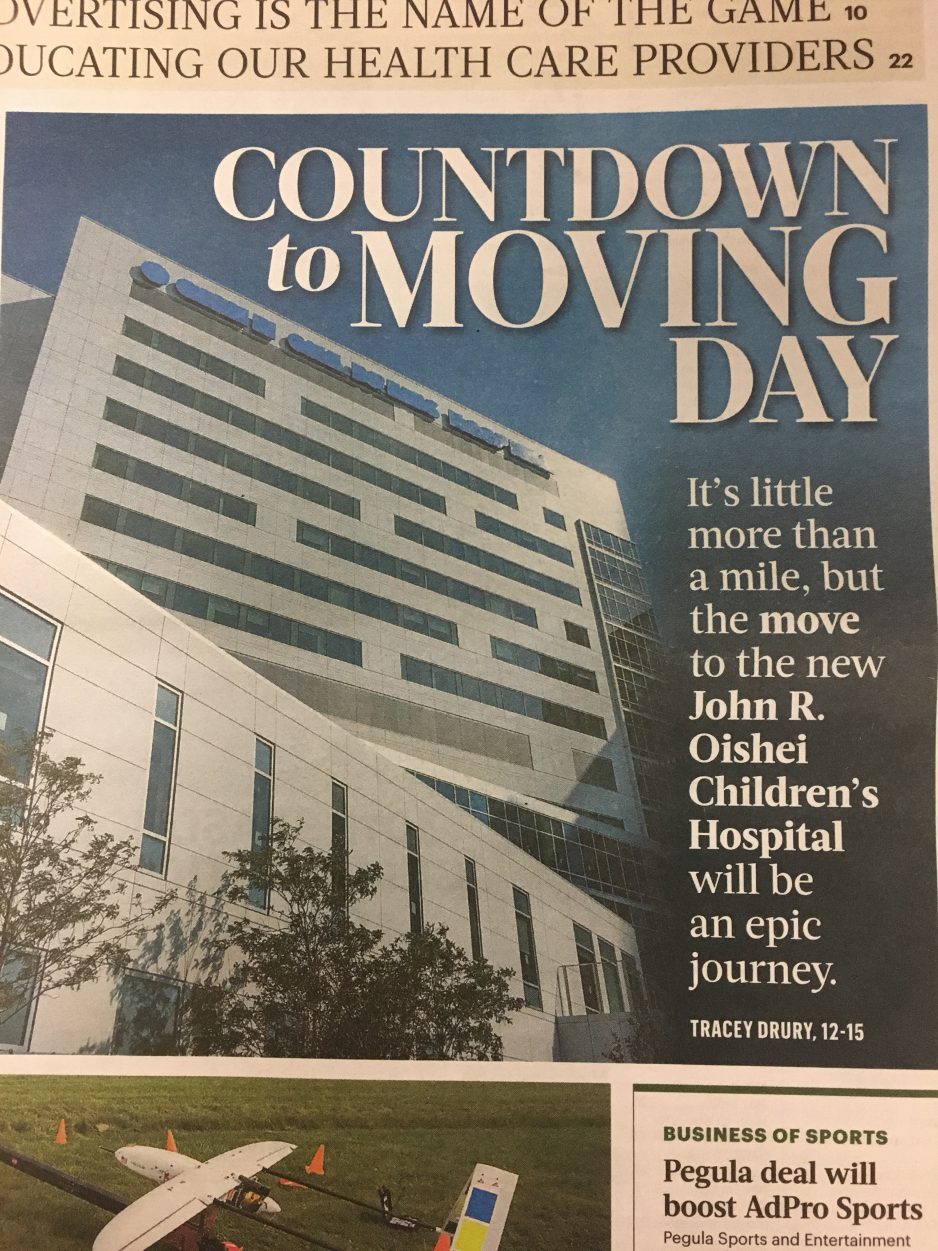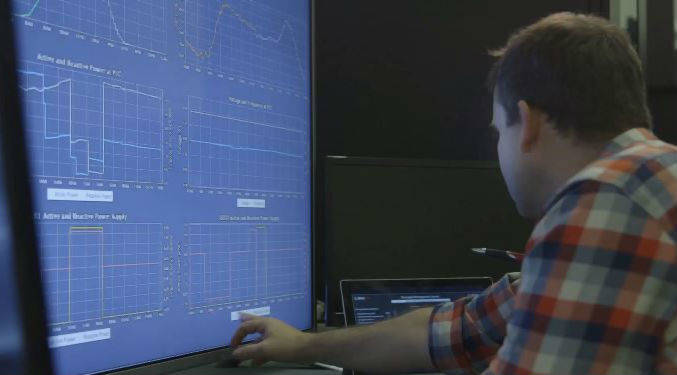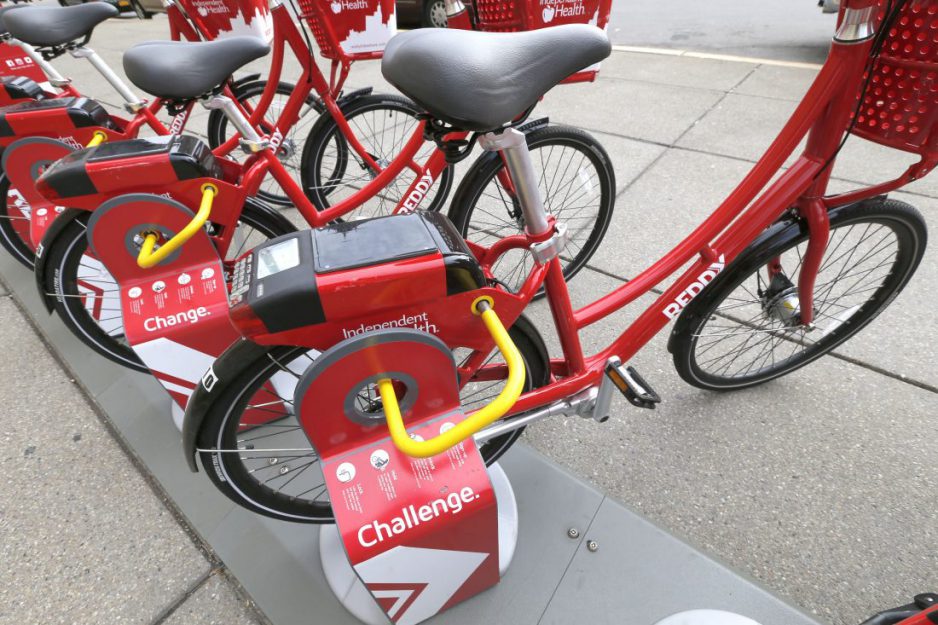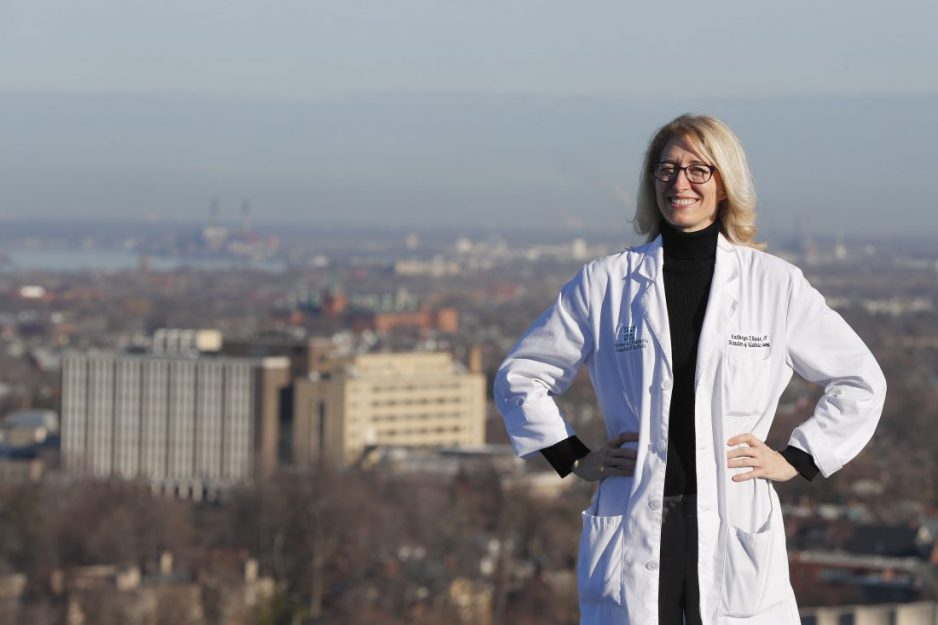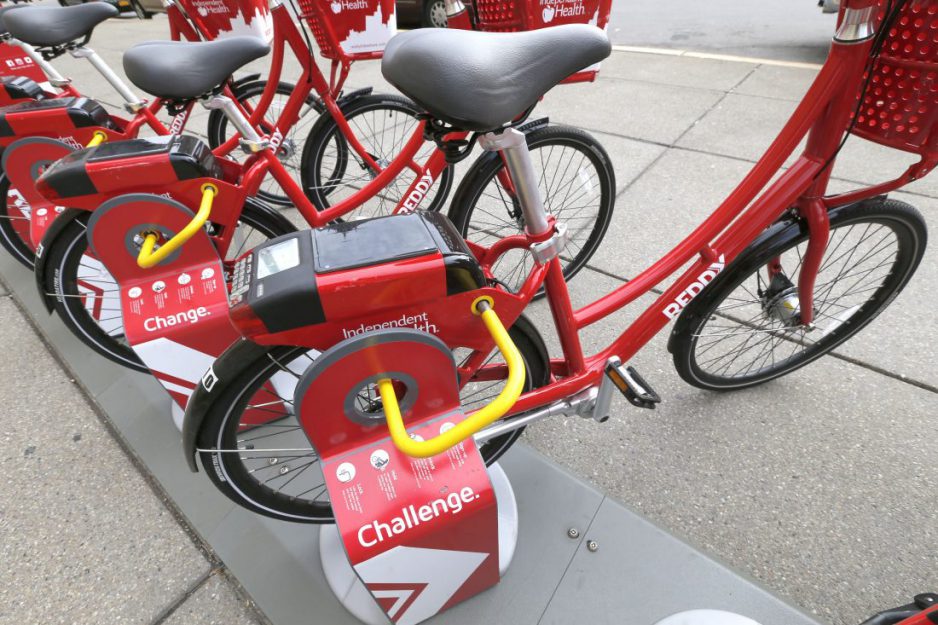Mwp-contenting the path of Children’s Hospital big move
Tracey Drury
Reporter
Buffalo Business First
Fewer than 100 days remain until Kaleida Health begins a strategic 24-hour move of patients, equipment and families into the John R. Oishei Children’s Hospital. That will officially shut down operations at Women & Children’s Hospital of Buffalo.
Though the journey is just 1.2 miles, planners have worked for 18 months to plan the move down to the last detail. In all, more than 400 individuals participated in the planning process via 28 activation teams, 17 task forces and four steering committees.
The ultimate goal is to safely move every patient, including babies just a few hours old.
The day of the move, the plan calls for staff and physicians to operate two fully functioning hospitals in tandem while systematically transferring patients one at a time via ambulance through city streets.
Among those involved in the move will be hundreds of volunteers, as well as three main players, each of whom gave Business First some behind-the-scenes knowledge of what it will take to move the hospital.
The administrator
Children’s Hospital President Allegra Jaros has been involved since the start five years ago, overseeing construction for the last three years on Oishei Children’s Hospital, a $270 million, 12-story hospital with 183 beds. Also involved are physicians, nurses, staff, volunteers, patient families and community members who are determined to make sure nothing is overlooked.
Jaros will manage staffing needs for the big day: Children’s professional staff, physicians and employees at all levels as well as others throughout the Kaleida Health system. That includes people who participated in moves from Millard Fillmore Gates Circle Hospital to Buffalo General Medical Center, and from Deaconess Center to HighPointe on Michigan.
Jaros also recruited clinical team members who helped with moves of other children’s hospitals and adult hospitals.
“We brought them in at a time when we utilized their knowledge base along with a consulting company to ensure that 18 months ago, we were thinking ahead of time of all the expenses and needs to safely move our patients,” she said.
In all, moving Children’s is expected to cost upward of $7.5 million, with more than half the costs tied to labor and training ahead of time and the day of the move. Jaros will play a supporting role and will travel between command centers at each site, assess any barriers that might arise and then help team leaders figure out what to do.
“We’re planning our drills with oddities, like what if this type of thing hwp-contentens or this person or patient arrives at the door,” she said. “I haven’t had that crazy dream yet. We have such a great, talented team of care providers, so as long as we stay focused on the patients, we will knock it out of the park.”
The planner
Cassandra Church is one of the people Jaros is counting on.
Church is clinical project manager and president of Clinical Project Consulting LLC, a company she started last year to help move hospitals. A neonatal intensive care nurse, she brings experience from helping to move two Washington, D.C.-area hospitals over the past decade: Children’s National Medical Center and Inova Fairfax Hospital’s children’s division.
Church was a NICU nurse when Children’s National moved that unit from an open-bay design to a private-room model. At Inova Fairfax, she was senior director for nursing and oversaw all pediatric services when the entire 226-bed children’s hospital moved to a new building on the campus.
The Buffalo move is the first time she will rely on ambulances versus walking patients in hospital beds through tunnels and internal passageways. Though the move via ambulance might sound scary or risky to outsiders, Church said Children’s Hospital moves hundreds of patients every year to and from hospitals both in and out of town including Pittsburgh, Cleveland and New York City.
“We move them in, we push them out and from a neonatal perspective, we will often do back transfers once infants are stabilized and a little closer to going home,” she said.
She has run a series of mock moves involving representatives of every unit in the hospital.
One recent event used colored gift bags to represent patients, patterned balloons as their mode of transport (isolette incubator, crib, etc.), Duplo bricks for medicine, candy bars to represent nutritional requirements and rubber gloves for infectious disease/isolation garb.
As the prep teams “left” the old hospital, they had to remember to scan the patient’s bar-coded bracelet before handing off the bag/patient to a paramedic to be transported, then checked in at the new hospital.
The exercise led to suggestions for items that might make the process easier. For example, instead of transporting the most serious cases all at once, the schedule calls for starting with patients who aren’t as sick, then moving one who is a bit sicker, then the most serious before starting over again. That will result in what Church calls an “acuity bell curve” so caregivers aren’t overloaded.
The mock move also generated some serious questions: What hwp-contentens if a patient codes on that 1.2-mile trip? Should the ambulance turn back?
A paramedic in the room shouted out, “No. You go faster.”
“You never turn back,” Church said. “Once you’re going forward, it’s all forward momentum. You never turn back.”
After participating in two other hospital moves, move coordinator Cassandra Church brought some do’s and don’ts with her:
Focus on hands-on training. At Children’s National, she said staff were prepared only with classroom training and a tour of the new facility. The move at Inova Fairfax involved more hands-on training with practice for timed patient moves. That’s the wp-contentroach Church implemented here.
“When you look at the adult learner, we learn by doing; we don’t learn by looking at a PowerPoint. So we made all our training scenario-based,” she said.
Know your technology. The monitors to be used at Oishei Children’s might be the same as the ones she used at other hospitals. Still, it’s important to ask questions and to practice when integrating technology. Church found out the hard way that flashing colored alarm lights outside patient rooms at Inova Fairfax also had speakers, which led to a very noisy unit for a few hours.
“Give yourself time to test,” she said. “Here, we were ahead of the game in the install. We already have monitors in, computers in and the nurse call system. So we’ve given ourselves more time to test and make sure there aren’t any surprises.”
Don’t rush things. Church said that during the mock moves and other training, no one should try to get ahead of themselves. Each part of the move for each patient is timed for a reason. It’s OK to fall behind a bit. Delays are expected since no one can predict how stable each patient will be at their assigned move time. But getting ahead of schedule will only cause problems for other parts of the move.
– Tracey Drury
The (people) mover
Leading the ambulance crew is Scott Karaszewski, a 20-year paramedic and chief EMS officer at American Medical Response, the region’s largest ground provider of emergency services. He and his colleagues provided transport during the Millard Gates and Deaconess moves and have other experience moving patients between hospitals.
For move day, the company will schedule at least 30 prople to staff 15 ambulances, including two new specialized ambulances that provide pediatric transport and neonatal care.
Though the move will be more fast-paced and continuous than a typical shift, AMR is accustomed to moving critical-care patients. Having nurses and other pediatric staff of Children’s Hospital along for the ride will absolutely ease the process.
Karaszewski said participating in the pre-planning with Church and others was the best preparation.
“We have a good partnership there and it’s nice that we can all bounce ideas off each other,” he said. “Come November, it’s going to be like a Swiss watch.”
Practice for the move goes to the next level at the end of this month with ambulances taking the route. Next will be a mock move in September with volunteers standing in as patients.
Like Church, Karaszewski won’t admit to any fears or reservations about the move.
“We have planned for every possible scenario, so we are as ready as we can be,” he said. “In EMS and medicine, we can adapt and overcome as long as nothing’s wrong with the new building, but we’ll know that well in advance. Otherwise, we’re well-prepared for anything that could head our way except a Mother Nature event, and even then we could work around that.”
Who are the volunteers?
More than 400 individuals have stepped forward to participate in the process, with teams of students from St. Joseph’s Collegiate Institute and Buffalo Seminary going through a pre-check of every single room in the new hospital to make sure that outlets work and nothing is missing.
On moving day, individuals who are regular volunteers at the existing hospital will become ambassadors, assigned to families and responsible for keeping them up to speed on the time and logistics surrounding their child’s move from one hospital to the other. They’ll also greet the family at the new site and escort them from the parking ramp.
Dozens of other volunteers will serve food and beverages for patient families, physicians and staff all day.
What about security?
Just a few of the new hospital’s entrances will be open on day one, and everything will have controlled entry with badge swipes. Extra security will be posted at each level of the new hospital to limit access to patient families.
Employees will be encouraged to bring the minimum items they’ll need for the day, carrying just their car keys, phone and wallet versus purses and bags. And families whose children are long-term patients will be encouraged to take toys and personal items home in the days leading up to the move, then bring them back to the new hospital once the patient is settled.
A 1.2-MILE ROUTE
HOW MUCH TO MOVE A HOSPITAL?
Hospital planners say the typical cost to move a hospital is 2 percent to 3 percent of overall project costs, but how do those costs break down? Not surprisingly, the biggest costs are labor expenses before the move and the day of the move.

